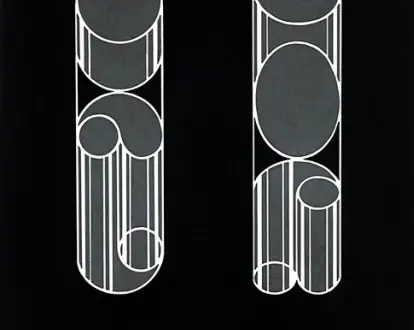Title of Artwork: “Impossibles”

Artwork by Josef Albers
Year Created 1931
Summary of Impossibles
While teaching at the Bauhaus, the influential German design, architecture, and applied arts school, Josef Albers created Impossibles (1931). Impossibles, one of the Bauhaus’ most famous works, exemplified the school’s experimental ethos. The Bauhaus was an outgrowth of the Arts and Crafts movement and a proponent of the marriage of fine art and handicraft. In 1920, Albers enrolled in the school and produced work in glass, furniture design, metalwork, and typography during his time there. In 1925, the year the Bauhaus moved from Weimar to Dessau, he became a professor and joined the school’s faculty.
All About Impossibles
In Dessau, he designed furniture and worked with glass, among other things. Albers’ experimentation with unconventional materials and methods can be seen in Impossibles, a sandblasted flashed glass painting.. Even before the Bauhaus, Albers had a background in glasswork; his first public commission was a stained-glass window for a church in Essen, Germany, in 1918. Despite his background as a painter, he joined the Bauhaus faculty to pursue a career in stained glass. The transition from figurative art to abstract art was made by Albers, like many of his peers. Albers found that the mechanical process of making the glass piece suited him because it provided the discipline and detachment that he needed to create non-representational forms.
On the bottom, the two cylinders have the same circumference, but the tops are significantly different. The cylinders appear to be straight at the same time, which is impossible. In addition, the cylinders appear to rise and fall at the same time, which is an impossibility. A closer examination of this piece reveals the fact, as the title implies: the image appears to be real, but these cylinders do not exist in the real world. Rolled Wrongly (1931), another sandblasted glasswork by Albers, depicts two scroll-like forms that can be seen from both the inside and the outside simultaneously. In these works, Albers shows a fondness for images that contrast two opposing ideas or represent something incongruous.
Another European tradition is Constructivism, an artistic and architectural philosophy founded in Russia in 1913. The Bauhaus school was influenced by the constructivist art movement, and Albers himself was close to El Lissitzky and other constructivist artists. Throughout Albers’ career, he experimented with abstract linear geometric patterns. It, along with other works from the Bauhaus, is a symbol of the movement. Although it was only around for 14 years, the Bauhaus had a significant impact on Western European, North American, and Israeli art and architecture. Both Albers and his wife Anni fled to America in 1933, shortly after the Nazis shut down the Bauhaus in Weimar, Germany. Albers went on to teach art at two different universities in the South: Black Mountain College, in North Carolina, and Yale University, in Connecticut.
Information Citations
En.wikipedia.org, https://en.wikipedia.org/.























